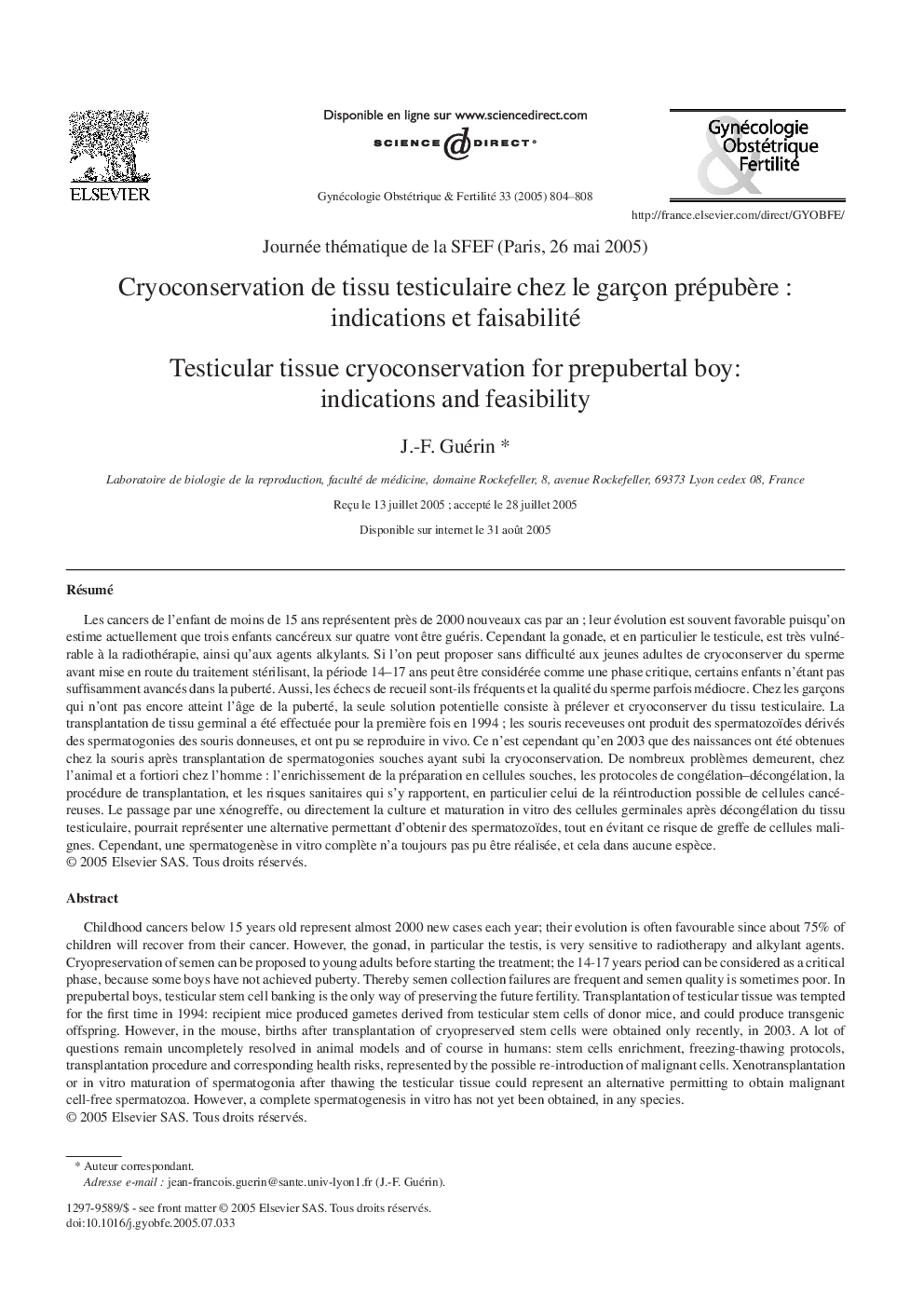| Article ID | Journal | Published Year | Pages | File Type |
|---|---|---|---|---|
| 9328824 | Gynécologie Obstétrique & Fertilité | 2005 | 5 Pages |
Abstract
Childhood cancers below 15Â years old represent almost 2000 new cases each year; their evolution is often favourable since about 75% of children will recover from their cancer. However, the gonad, in particular the testis, is very sensitive to radiotherapy and alkylant agents. Cryopreservation of semen can be proposed to young adults before starting the treatment; the 14-17Â years period can be considered as a critical phase, because some boys have not achieved puberty. Thereby semen collection failures are frequent and semen quality is sometimes poor. In prepubertal boys, testicular stem cell banking is the only way of preserving the future fertility. Transplantation of testicular tissue was tempted for the first time in 1994: recipient mice produced gametes derived from testicular stem cells of donor mice, and could produce transgenic offspring. However, in the mouse, births after transplantation of cryopreserved stem cells were obtained only recently, in 2003. A lot of questions remain uncompletely resolved in animal models and of course in humans: stem cells enrichment, freezing-thawing protocols, transplantation procedure and corresponding health risks, represented by the possible re-introduction of malignant cells. Xenotransplantation or in vitro maturation of spermatogonia after thawing the testicular tissue could represent an alternative permitting to obtain malignant cell-free spermatozoa. However, a complete spermatogenesis in vitro has not yet been obtained, in any species.
Keywords
Related Topics
Health Sciences
Medicine and Dentistry
Obstetrics, Gynecology and Women's Health
Authors
J.-F. Guérin,
